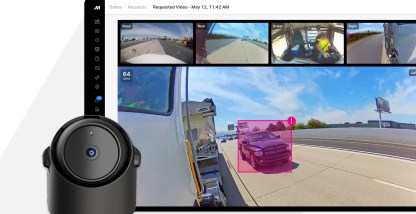Speed limit laws in the United States started in 1901. Connecticut legislated a maximum speed of 12 mph in cities and 15 mph on country roads. More widespread adoption of speed limits started in the early 1970s amid anxiety over rising fuel prices. A national speed limit of 55 mph was established under President Richard Nixon in 1974. The move saw America’s traffic fatality rate per million miles traveled drop from 4.28 in 1972 to 2.73 in 1983.
Still, as fuel costs dropped, the national maximum speed limit on interstates rose to 65 mph. In 1995, Congress gave states the power to set their own maximum speed limits.
What is the fastest speed limit in the U.S.?
The big question is, “What is the highest speed limit in the U.S.?” We may not have an Autobahn in this country, but there’s a toll road in Texas that lets drivers travel 85 mph. State Highway 130 stretches between Austin and San Antonio.
Otherwise, since 1995, 35 states have increased their freeway speed limit to 70 mph or higher.
U.S. speed limits by state
Now that you know where to find the highest speed limit in the U.S., let’s look at other U.S. speed limits. Ranging from 55 to 85 mph, the maximum speed limit for trucks varies from state to state. The following table, edited from The Insurance Institute for Highway Safety (IIHS) and the Highway Loss Data Institute (HLDI), captures variations in highway speed limits nationwide.
| State | Rural interstates (mph) | Urban interstates (mph) | Other limited access roads (mph) | Other roads (mph) |
| Alabama | 70 | 65 | 65 | 65 |
| Alaska | 65 | 55 | 65 | 55 |
| Arizona | 75 | 65 | 65 | 65 |
| Arkansas | 75 | 65 | 75 | 65 |
| California | 70 | 65 | 70 | 65 |
| Colorado | 75 | 65 | 65 | 65 |
| Connecticut | 65 | 55 | 65 | 55 |
| Delaware | 65 | 55 | 65 | 55 |
| District of Columbia | n/a | 55 | n/a | 25 |
| Florida | 70 | 65 | 70 | 65 |
| Georgia | 70 | 70 | 65 | 65 |
| Hawaii | 60 | 60 | 55 | 45 |
| Idaho | 75 (80 on specified roads) | 75 (80 on specified roads) | 70 | 70 |
| Illinois | 70 | 55 | 65 | 55 |
| Indiana | 70 | 55 | 60 | 55 |
| Iowa | 70 | 55 | 70 | 65 |
| Kansas | 75 | 75 | 75 | 65 |
| Kentucky | 65 | 65 | 65 | 55 |
| Louisiana | 75 | 70 | 70 | 65 |
| Maine | 75 | 75 | 75 | 60 |
| Maryland | 70 | 70 | 70 | 55 |
| Massachusetts | 65 | 65 | 65 | 55 |
| Michigan | 70 (75 on specified roads) | 70 | 70 | 55 |
| Minnesota | 70 | 65 | 65 | 60 |
| Mississippi | 70 | 70 | 70 | 65 |
| Missouri | 70 | 60 | 70 | 65 |
| Montana | 80 | 65 | 70 | 70 |
| Nebraska | 75 | 70 | 70 | 65 |
| Nevada | 80 | 65 | 70 | 70 |
| New Hampshire | 65 (70 on specified roads) | 65 | 55 | 55 |
| New Jersey | 65 | 55 | 65 | 55 |
| New Mexico | 75 | 75 | 65 | 55 |
| New York | 65 | 65 | 65 | 55 |
| North Carolina | 70 | 70 | 70 | 55 |
| North Dakota | 75 | 75 | 70 | 65 |
| Ohio | 70 | 65 | 70 | 55 |
| Oklahoma | 75 (80 on specified roads) | 70 | 70 | 70 |
| Oregon | 65 (70 on specified roads) | 55 | 65 | 65 |
| Pennsylvania | 70 | 70 | 70 | 55 |
| Rhode Island | 65 | 55 | 55 | 55 |
| South Carolina | 70 | 70 | 60 | 55 |
| South Dakota | 80 | 80 | 70 | 70 |
| Tennessee | 70 | 70 | 70 | 65 |
| Texas | 75 (80 or 85 on specified roads) | 75 | 75 | 75 |
| Utah | 75 (80 on specified roads) | 65 | 75 | 65 |
| Vermont | 65 | 55 | 50 | 50 |
| Virginia | 70 | 70 | 65 | 55 |
| Washington | 70 (75 on specified roads) | 60 | 60 | 60 |
| West Virginia | 70 | 55 | 65 | 55 |
| Wisconsin | 70 | 70 | 70 | 55 |
| Wyoming | 75 (80 on specified roads) | 75 (80 on specified roads) | 70 | 70 |
Are speed limits for trucks different?
The speed limit for trucks is different in specific states. When wondering “what is the speed limit for semi-trucks” on your route, you’ll want to be aware of the following variations in commercial truck speed limits by state.
Commercial truck speed limits by state
- Arkansas limits trucks to 70 mph on rural interstates and other limited access rates.
- California limits trucks to 55 mph on all interstates and roads.
- Idaho limits trucks to 70 mph on rural interstates and 65 mph on urban interstates.
- Indiana limits trucks to 65 mph on rural interstates.
- Michigan limits trucks to 65 mph on rural interstates.
- Montana limits trucks to 70 mph on rural interstates.
- Oregon limits trucks to 70 mph on rural interstates.
- Washington limits trucks to 60 mph on rural interstates.
The speed limits for semi-trucks can be impacted by cargo. Alabama limits trucks to 55 mph for hazardous cargo such as explosives.
Keep an eye out for new legislation that would limit the speed of heavy-duty commercial trucks nationwide. The measure has been in the works for a decade, but the bipartisan Cullum Owings Large Truck Safe Operating Speed Act of 2019 directs the Department of Transportation (DOT) to require all new trucks to be equipped with regulators that would limit the speed to 65 mph.
What are the highway speed limits accomplishing?
The increase in speed limits over the last 40 years has increased highway fatalities. According to the IIHS, more than 33,000 fatal accidents between 1993 and 2013 could be linked to increased speed limits.
Limiting speed is also believed to have environmental benefits. Lower rates of speed mean greater fuel efficiency and lower carbon emissions.
What are the speed limits in residential areas?
The speed limit in residential areas also changes by state. This chart, edited from MIT, captures the variations. When the numbers are in parentheses, “there is no special residential speed limit under state law and the indicated state speed limit is in effect if signs are not posted.”
| Alabama, 30 | Hawaii, n/a | Massachusetts, 30 | New Mexico, 35 | South Dakota, 25 |
| Alaska, 25 | Idaho, 35 | Michigan, 25 | New York, (55) | Tennessee, (65) |
| Arizona, 25 | Illinois, 30 | Minnesota, 25-30 | North Carolina, 35 | Texas, 30 |
| Arkansas, 30 | Indiana, 30 | Mississippi, (65) | North Dakota, 25 | Utah, 25 |
| California, 25 | Iowa, 20-25 | Missouri, (60) | Ohio, 25 | Vermont, (50) |
| Colorado, 30 | Kansas, 30 | Montana, 25 | Oklahoma, (65) | Virginia, 25 |
| Connecticut, (55) | Kentucky, 35 | Nebraska, 25 | Oregon, 20-25 | Washington, 25 |
| Delaware, 25 | Louisiana, (55) | Nevada, (75) | Pennsylvania, 35 | West Virginia, 25 |
| Florida, 30 | Maine, 25 | New Hampshire, 30-35 | Rhode Island, 25 | Wisconsin, 25 |
| Georgia, 30 | Maryland, 30 | New Jersey, 25-35 | South Carolina, 30 | Wyoming, 30 |
What are nighttime speed limits?
There are nighttime speed limits in Montana, which requires drivers to slow from 70 mph to 65 mph on limited access and other roads at night. Some other states have nighttime speed limits during certain seasons. Colorado and Florida change the speed limits when drivers are at peak risk of hitting wildlife. Washington also drops the speed on Highway 20 at night due to a high number of deer on the road.
How Motive’s safety platform keeps commercial vehicles in check
This in-depth look at U.S. speed limits isn’t enough to keep you or your drivers safe on the road. Improve fleet safety by preventing speeding. Motive’s proactive safety platform helps commercial fleets and their drivers detect and correct unsafe driving behaviors with industry-leading accuracy.
Notable features are listed below.
- High-risk driving behavior detection. Our dashcams can help you curb aggressive driving.
- Real-time alerts. Fleet and safety managers can be notified immediately when a driver surpasses the appropriate truck speed limit. The driver will be flagged for post-trip proactive coaching.
- Accurate and real-time vehicle tracking and data collection
- GPS tracking for drivers, vehicles, and assets
- Route optimization tools
Find out more about Motive’s safety platform and how it can benefit you. Request a free demo today.









